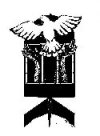
Nuclear Resistance 1999
Year-end summary and anti-nuclear anti-nuclear arrest statistics, 1983-1999
by Jack & Felice Cohen-Joppa

Nuclear Resistance 1999
Year-end summary and anti-nuclear anti-nuclear
arrest statistics, 1983-1999
by Jack & Felice Cohen-Joppa
Arrests for nuclear resistance in the United States and Canada have climbed slightly in the last year.
As the century drew to a close, the threat of nuclear weapons remained in view. Resistance has flourished in Great Britain, where the Trident Ploughshares 2000 campaign is vigorously challenging the nuclear establishment in the courts and often in prison. A belief that nuclear weapons are contrary to international law continues to motivate these and many other nuclear resisters.
Although the numbers may not indicate it, the vitality of anti-nuclear resistance seems to be increasing as we enter the new year. 1999 saw the largest protest ever in Los Alamos, the birthplace of The Bomb, where 68 people crossed the line on August 9. Organizers are planning an even larger turnout this year to oppose the Los Alamos Lab's vision of nuclear weapons forever. In the first minutes of the year 2000, more than 300 people crossed the line onto the Nevada Test Site. A renewed U.S. campaign against Trident conversions is also underway, with coordinated actions planned in mid-January, 2000 to commemorate the birth of Martin Luther King, Jr.
The conceptual gap between nuclear and conventional warfare continued to narrow in 1999, as the 9-year state of siege of Iraq was recognized as an effective weapon of mass destruction even in the establishment review Foreign Policy. The destruction of Iraq intensified with all-too-regular reports of U.S. and British bombs and missiles picking off military and civilian targets, as well as unarmed people nearby.
This past year in the Balkans, N.A.T.O./U.S. A-10s spread perhaps 10 - 30 tons of depleted uranium ammunition. The use of depleted uranium here and in the Gulf War has done much to blur the lines between conventional and previous notions of nuclear warfare.
As the gap narrows, our challenge in producing an annual tally mounts: how to distinguish between actions which are anti-war and those which also clearly have an anti-nuclear component?
In 1999, considerable nonviolent resistance energies went into opposing these two wars, resulting in hundreds of arrests. Fallout from the attacks on Serbia - political and radioactive - continues to be felt in Vieques, Puerto Rico, where tragically sloppy bombing practices triggered a broadly supported mass civil disobedience campaign that has Navy wargamers in a stalemate at year's end, even with less than a handful of arrests reported so far.
Additionally, in the United States, attention focused on the School of the Americas (SOA) last November led to more than double the number of participants (than) in the previous year's SOA action - which had already established itself as the largest civil disobedience action in the U.S. since the height of the movement against the war against Vietnam.
NUCLEAR RESISTANCE ARRESTS, U.S. AND CANADA, 1983-1999
# of arrests # of sites # of actions
1999 730 22
46
1998 655
25 48
1997 910 32
59
1996 590 25
48
1995 990 34
77
1994 910 41
73
1993 1,000 37
80
1992 2,480
40 90
1991 2,550 32
65
1990 3,000 41
85
1989 5,530 75
150
1988 4,470 65
160
1987 5,300 70
180
1986 3,200 75
165
1985 3,300 120
170
1984 3,010 85
160
1983 5,300
60 140
[Editors' note: For accurate comparison, the statistics quoted here
include only those arrests and actions that included a clear anti-nuclear
component.] We encourage the use and republication of this information.
O.K. to edit for space. We ask only that credit be given to the Nuclear
Resister.
